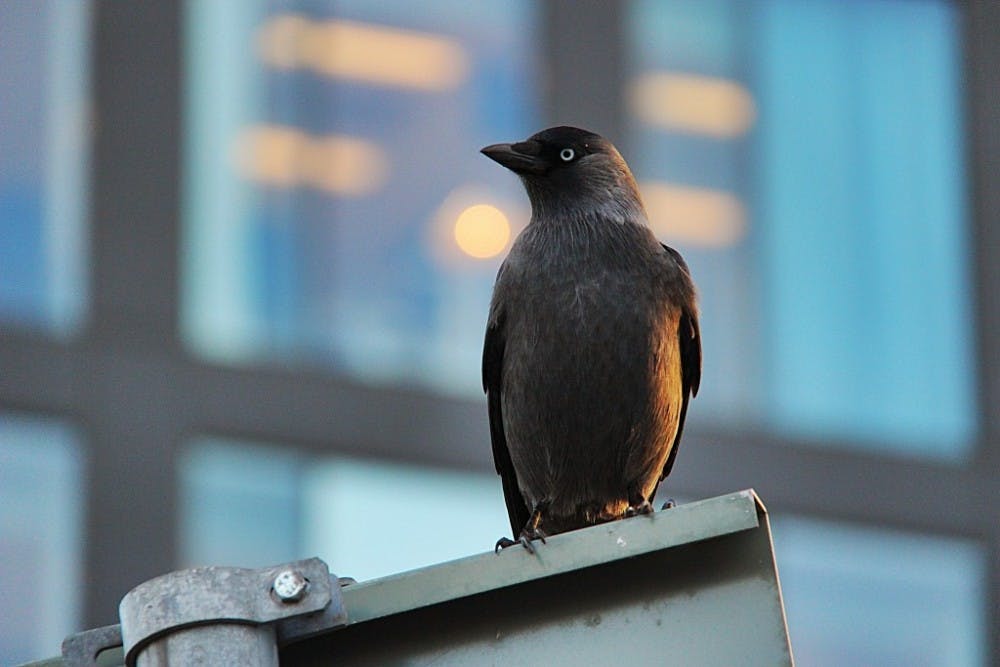Animals adapt to survive. When we think of this concept, we can imagine animals facing challenges in the wild: foraging for food, searching for shelter or competing for a mate. Recent studies show that animals living in our cities also need to adapt in order to survive in the urban jungle. Some of their unique adaptations allow them to survive just as well as, if not better than, their counterparts in the wild.
A study published in Behavioral Ecology in 2016 reports that urban birds possess a significant increase in their level innovation, important for the survival of animals living in the wild, compared to rural birds.
“We found that not only were birds from urbanized areas better at innovative problem-solving tasks than bullfinches from rural environments, but that surprisingly urban birds also had a better immunity than rural birds,” Jean-Nicolas Audet of McGill University, an author of the study, said in a press release.
The higher level of immunity was most likely due to the urban birds’ exposure to a larger variety of pathogens.
Previous studies have pointed toward other advantages for bird survival that were associated with living in urban environments.
Noise pollution is one challenge that can interfere with how birds communicate in cities. Urban birds sing at a higher pitch than their rural counterparts in order to differentiate their sounds from the din of vehicular traffic. Scientists from the Max Planck Institute for Ornithology have found that the higher pitch that urban birds employ also comes with an increase in volume which further helps them to be heard by other birds.
Their results were published in the Proceedings of the Royal Society B: Biological Sciences in 2013.
Robins living in urban areas have been found to adjust their singing time to later in the evening to avoid the increase in noise that occurs during rush hour. This has improved the effectiveness of their communicative sounds, resulting in a higher success rate in defending their territories and attracting mating partners.
Urban birds have also changed their anti-predator behavior due to their new environment. Typically, when a bird is faced with an aggressive predator, its only objective is to escape. Juan Diego Ibáñez-Álamo, a researcher at the University of Granada, analyzed the escape techniques of 14 species of birds in rural and urban environments and published his findings in Animal Behaviour in 2012. He reported that urban birds have changed their behavior to adapt to a new threat that they had not previously experienced: cats, the main predator in city surroundings. In contrast, the sparrow hawk is the traditional predator in the natural environment of the birds that he studied.
“When they are captured, city birds are less aggressive, they produce alarm calls more frequently, they remain more paralyzed when attacked by their predator and they lose more feathers than their countryside counterparts,” Ibáñez-Álamo said in a press release.
Birds are not alone in developing adaptation strategies to survive urban challenges. Squirrels have also developed adaptations to survive New York City’s human behavioral patterns. Research shows that these adaptations have allowed them to thrive just as well as, and in some cases better than, their forest-dwelling relatives.
Bill Bateman reported in the Journal of Zoology in 2014 that eastern grey squirrels modified their behavior and prevented unnecessary responses to humans when these humans acted in a predictable manner, such as staying on a footpath.
According to the Bateman, only five percent of squirrels showed signs altering their behavior if a human remained on the footpath and did not look at them, while 90 percent of squirrels moved away when they were approached by a pedestrian who moved off the footpaths and looked at the squirrel.
“This research shows squirrels are able to modulate their behavior when humans behave in a predictable manner, reducing unnecessary responses and improving their ability to persist in an urban environment,” Bateman said in a press release. “For a squirrel, the city provides a habitat with fewer predators than in the woods, and food tends to be available all year around. Traffic, however, remains the biggest killer for all urban wildlife.”
As urban areas grow, adaptation will likely prove vital to animals’ ability to avoid extinction.





